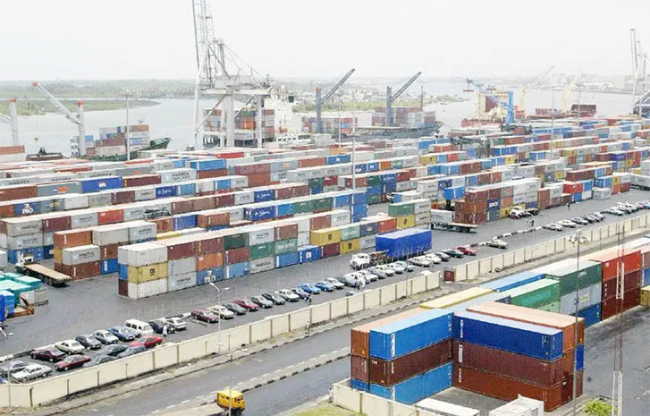The Nigerian suffered a trade deficit in t2020 to the tune of N7.37 trillion, the first in four years. This is according to the 2020 fourth quarter foreign trade in goods statistics report released by the National Bureau of Statistics, NBS, on Tuesday.
The N2.73 trillion trade deficit recorded in Q4 2020 represents the fifth consecutive quarterly trade deficit since the N1.38 trade surplus recorded in the third quarter of 2019.
Total trade declined by 10.3 percent to N32.42 trillion in 2020 from the N36.15 trillion recorded in 2019.
The value of total imports increased by 17.3 percent to N19.89 trillion compared to the N16.96 trillion recorded in 2019 and more than twice its value in 2017 (N9.56 trillion).
READ ALSO: Nigeria’s Export Value Rose By 6.7% In Q4 2020
In 2020, machinery and transport equipment accounted for 36.6 percent of total imports while chemicals and related products (18.2 percent); and mineral fuels (15.3 percent).
Imports from China accounted for 28.3 percent of the total imports followed by India (8.5 percent); United States (7.57 percent); the Netherlands (7.2 percent); and Denmark (5.4 percent).
Total exports dropped by 34.8 percent to N12.52 trillion in 2020 from N19.19 trillion in 2019.
In Q4 2020, Nigeria mainly exported mineral products, accounting for N2.96 trillion; the second-largest component was vehicles, aircraft and parts which was valued at N111.3 billion; and vegetable products worth N39.9 billion.
The top five export destinations in Q4 2020 were India, Spain, South Africa, the Netherlands and the United States with goods valued at N547.0 billion, N313.4 billion, N256.7 billion, N194.5 billion and N170.4 billion respectively.
These countries collectively accounted for 46.39 percent of the value of total exports in Q4 2020.
READ ALSO: The SME Sector Is A Potential Game Changer For Economic Growth – Akeem Lawal
In Q4 2020, the bulk of export transactions were conducted through Apapa port, accounting for 93.9 percent of total exports, followed by Port Harcourt which recorded 4.6 percent.
In terms of imports, Apapa Port also recorded the highest transactions at 42.8 percent, followed by Tin Can Island which accounted for 17.4 percent; while Port-Harcourt handled 10.35 percent of total imports.














